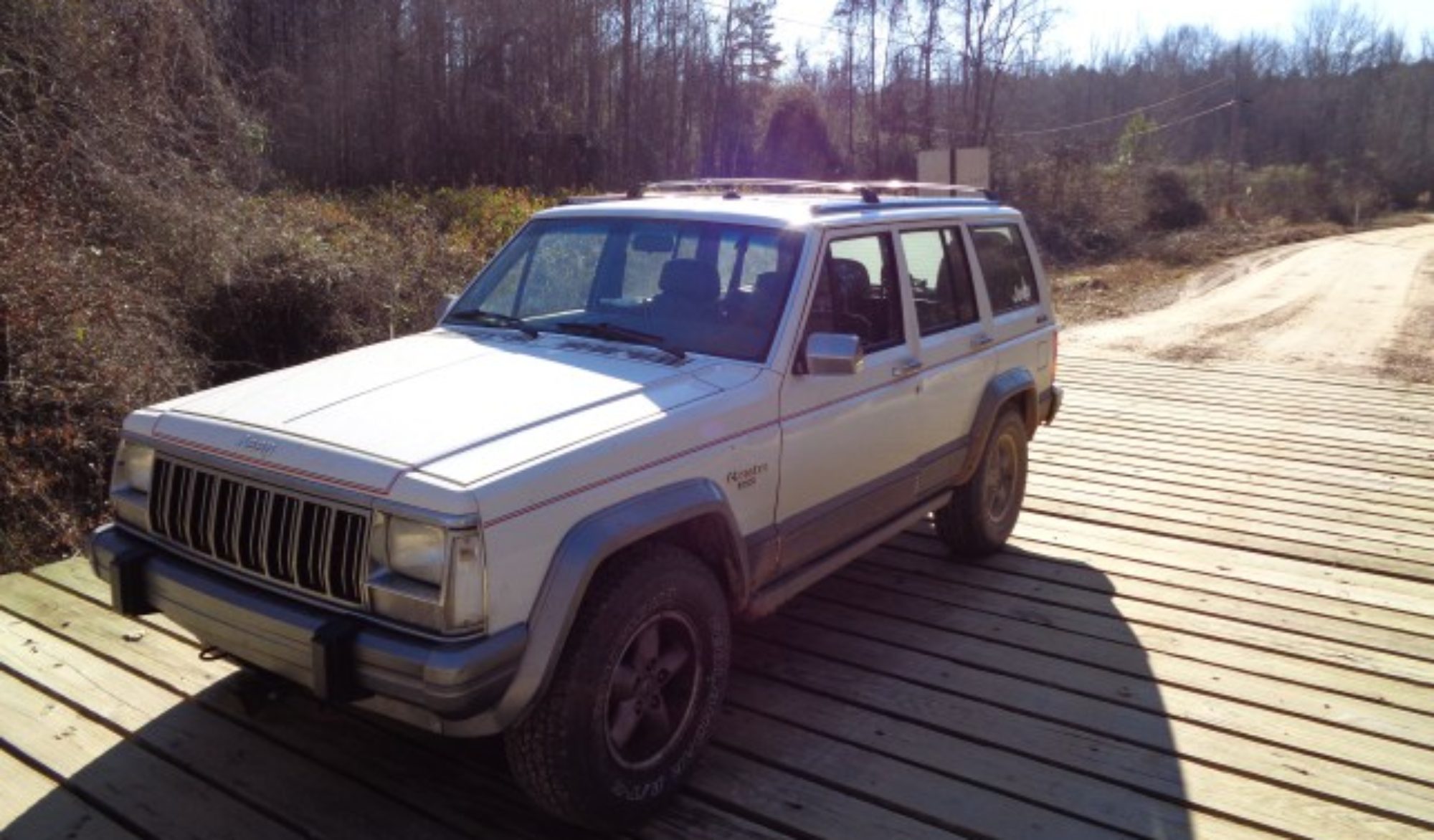On the last few cold mornings, I noticed the heater in my Jeep Cherokee was not putting out heat like I wanted. I also noted that the temperature gauge was not reading as high as normal.
I knew that the thermostat must be opening too soon. The only cure is to swap it out.
I picked up a Stant Supersat at Advance Auto. I used the order online – pick up at the store option to save a couple of bucks.
My Jeep is equipped with a K&N air filter and intake tube so I don’t have an air box in the way any more. I loosened the power steering pump and moved the drive belt out of the way of the thermostat housing. I have done it without loosening the belt but it is much easier with out the belt in the way.
The later model XJs have the belt routed where it is not in the way. However, on an earlier XJ like my 91 the belt interferes with getting the bolts started back in the housing. I previously wrote about changing a thermostat on a 99 XJ.
I popped off the radiator and heater hose. I disconnected the temperature sender wire.
I then removed the two 1/2 inch head bolts and popped the housing off the block. I set up a pan under the Jeep to catch the antifreeze. I also laid out newspaper to soak up the splatters as anti freeze is very slippery on the floor.
I cleaned up the bolts and the housing using the wire wheel on my bench grinder. I then use a scraper and a scotch brite wheel in my drill to clean the block face.
I noticed that the new thermostat did not have a bleed hole in it, so I drilled a small hole in the flange. It is hard to bleed all the air out of a 4.0 if there is no hole in the thermostat. Most of the ones I have bought lately have a hole but this one did not. So, I made one.
Getting the new thermostat to stay in the block while setting the housing is always tricky. I knocked mine out the first time and only noticed it when the antifreeze started to run out as I was filling the system.
I put a dab of Permatex on the flange to get the thermostat to hang in place long enough for me to slip the thermostat housing in place over it. I used additional Permatex to make the gasket stick to the housing. I held the housing in place with one hand while I started the bolts with the other hand. I was able to get it all in correctly on the second try.
I tightened the bolts and left the hoses off until I filled the system. I then reattached the hoses and filled the radiator completely with anti freeze. I then put back the temperature sender wire.
I put the belt back on and started the engine. I checked for leaks and made sure the engine came up to the proper temperature. I let it cool and topped off the radiator with coolant. I enjoyed having a nice warm heater again this morning.
Stant Superstat Super Premium Thermostat, 195 Degrees Fahrenheit – 45209




